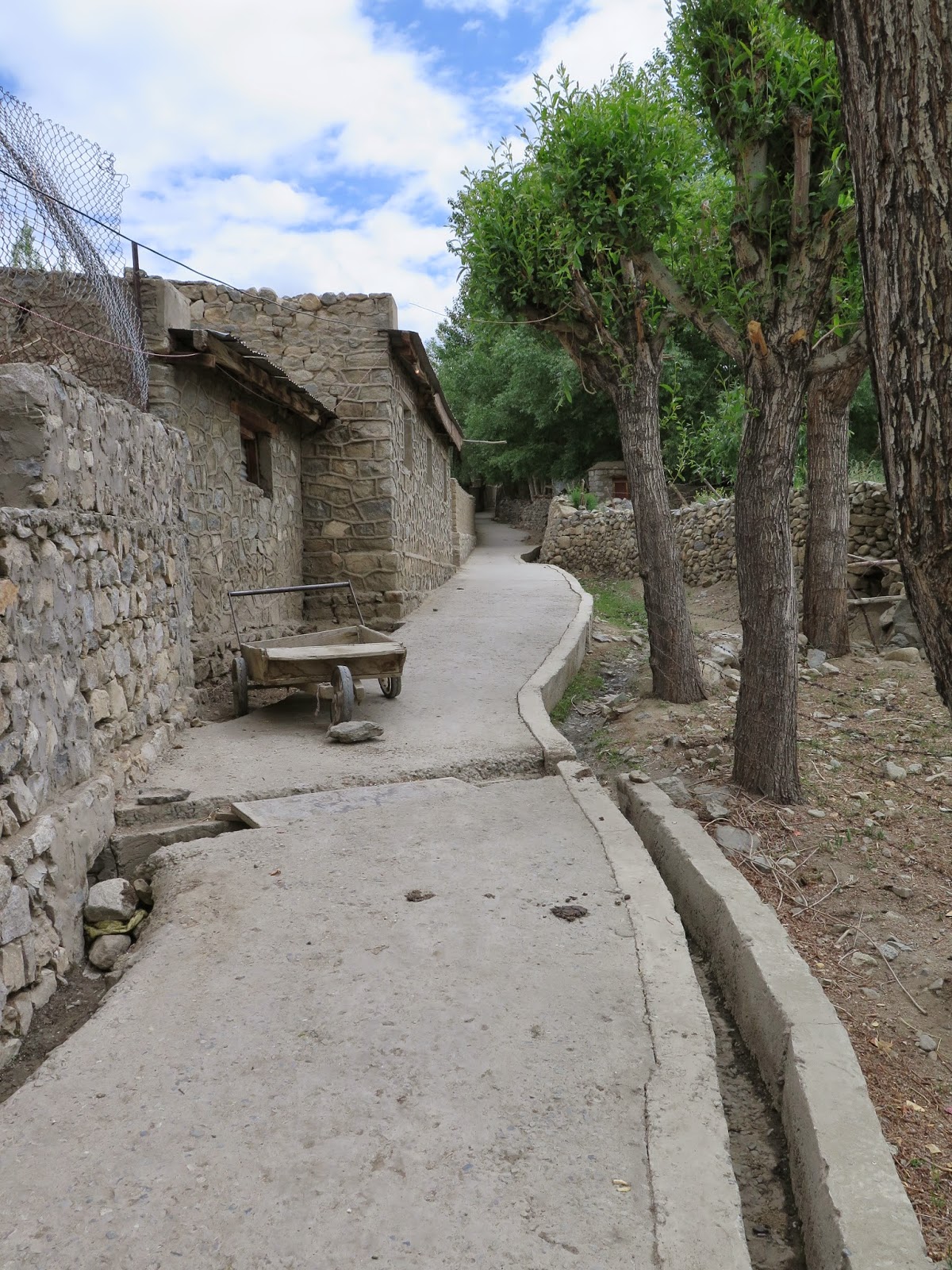
 Surrounding mountains make up for a jagged horizon in these parts. The sun is high, the sky a deep blue, oxygen is scarce as nature slowly grinds the rocks into a multitude of different colored sand. Here in Ladakh, at the top of the Himalayas, people have some how found a way to divert the snow melt into intricate irrigation canals that nourish the green terraced valleys which scar the unforgiving lunar landscape. Even though the mountain passes are uncrossable 8 months out of the year, a unique set of people push on to survive in their colorful garments, in a home dotted with monasteries.
Surrounding mountains make up for a jagged horizon in these parts. The sun is high, the sky a deep blue, oxygen is scarce as nature slowly grinds the rocks into a multitude of different colored sand. Here in Ladakh, at the top of the Himalayas, people have some how found a way to divert the snow melt into intricate irrigation canals that nourish the green terraced valleys which scar the unforgiving lunar landscape. Even though the mountain passes are uncrossable 8 months out of the year, a unique set of people push on to survive in their colorful garments, in a home dotted with monasteries. |
| typical alley with water canal |
 The Ladakhis welcome us everyday on the street with genuine smiles. The children reach out with their tiny hands waving and laughing "julleys". There is an innocence, curiosity and warmth that has not been corrupt in the last 20 years of tourism. Despite the harshness of life in this high altitude desert, people carry on with a purpose, dignity and a joy that put us entitled westerners to shame.
The Ladakhis welcome us everyday on the street with genuine smiles. The children reach out with their tiny hands waving and laughing "julleys". There is an innocence, curiosity and warmth that has not been corrupt in the last 20 years of tourism. Despite the harshness of life in this high altitude desert, people carry on with a purpose, dignity and a joy that put us entitled westerners to shame. I am here in Leh, along with many other pilgrims that have traveled from a far, to attend a 2 week long initiation into the Tibetan branch of Buddhism led by the Dalai Lama. Despite the shortage of resources, monks and volunteers pass out free tea and roti bread every morning to all 150,000 attendees.
I am here in Leh, along with many other pilgrims that have traveled from a far, to attend a 2 week long initiation into the Tibetan branch of Buddhism led by the Dalai Lama. Despite the shortage of resources, monks and volunteers pass out free tea and roti bread every morning to all 150,000 attendees.I was shocked to see that foreigners were given the covered seating section with the best view right up against the front of the stage with the monks... while the local people were forced to sit far in the back with no shelter from the rain or intense heat.

And despite this difference in treatment, the locals held no resentment. To the contrary, they would happily and excitedly welcome us, make sure that we knew where we were going, and that we had every comfort possible. Their attitude was that of a host honored to have guests that would come from so far, to participate in their event promoting world peace.

The richness of these selfless and generous interactions have made my heart swell with hope and gratitude. If a small population hidden in one of the hardest places to reach and survive on this planet, can receive us with so much openness, kindness and abundance... what would the world be like if the rich developed countries could focus some of their resources and education towards a more compassionate and positive global effort?
No comments:
Post a Comment